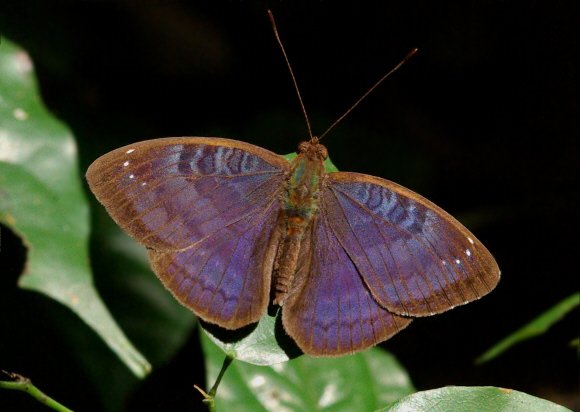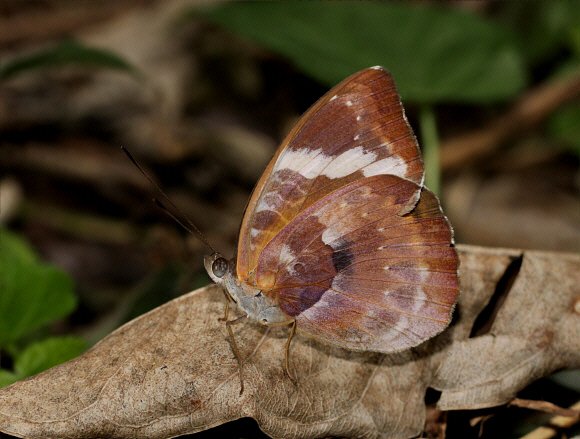
Introduction
There are about 70 Euriphene species, all of which are found in the forests of the Afrotropics.
Euriphene are similar in appearance to Bebearia but are generally smaller, and their hindwings are deeper and with a straighter costa. On the upperside the males of some species e.g. barombina, coerulea and veronica are grey with a vague metallic steely-blue sheen. Others including lysandra and gambiae have a reddish-brown ground colour. All have distinctive dark bars in the cell of the forewings and suffused dark markings over the rest of the wings. Many also have a series of small white dots arranged in an arc at the apex.
Females of obtusangula, obani and gambiae have a Catuna-like pattern of brown and cream. Most other species including barombina however have a reddish-brown ground colour, a dark apex, and a broken white or cream diagonal band across the forewings.
Euriphene barombina is distributed from Cote d’Ivoire to northern Angola, Congo and Uganda.

Habitats
This species is found in closed-canopy forest. It can be found in degraded forest but only if there is a core area of good quality forest nearby.
Lifecycle
The lifecycle of barombina appears to be unrecorded, but the following generalisations apply to the genus Euriphene: Several species are known to use Combretaceae as larval foodplants. The larvae have long multi-branched lateral spines. Pupation takes place at the end of a twig. Prior to pupation the larva spins a silk web on the twig and wets it with a noxious yellow fluid which deters ants.
Adult behaviour
Both sexes can be found on forest trails where patches of dappled sunlight filter down to the forest floor. The best description of their behaviour comes from Fox who writes: “These places appear to attract the butterflies that everywhere else on the forest floor are to be seen only as elusive ghost-like flashes. As one walks along a trail the butterflies rise up ahead and re-alight, repeating the process as one nears them again.”
